This website uses cookies so that we can provide you with the best user experience possible. Cookie information is stored in your browser and performs functions such as recognising you when you return to our website and helping our team to understand which sections of the website you find most interesting and useful.
Kherson

The Kherson Urban Territorial Community is located in the territory of the Kherson District in the Kherson Region.
The total surface area of the territory: 452.8 km2
The population of the community is 317,752 residents.
Men: 142,988
Women: 174,764
Children: 53,147
Pensioners: 65,654
Citizens of retirement age: 65 654
The current population of the community: 101 000
Children: 5250
Citizens of retirement age: 48 000
Internally displaced persons: 9 000
The Kherson Urban Community was created in 2020 and unites the administrative center itself – the city of Kherson and 15 settlements: 4 urban-type settlements, 3 villages and 8 settlements.
History
The city of Kherson was founded on June 18, 1778. An admiralty, a fortress, a city, and a trading port were established in Kherson.
The first ship built in Kherson was launched in 1783; a railway was laid and a new shipping channel to the Black Sea was built in the early 20th century.

In 1803, Kherson became the center of the province, which covered almost the entire south of Ukraine at that time. The city was built by European aristocrats who were exiled from their countries, which significantly influenced the architecture of the city in its historical part. To this day, Kherson retains fragments of the Kherson Fortress, 18th-century landmarks, and many 19th-century buildings.
«Bury me where I loved to walk. I want neither monuments nor inscriptions, but I would like a sundial to be placed on my grave». These were the last words of the famous British traveler, explorer, lawyer, philanthropist, and adventurer John Howard. Arriving in the city of Kherson in 1789, he helped to overcome the typhus epidemic and treated the sick at his own expense, which earned him the respect and love of the townspeople. However, Howard himself became infected with the disease, from which he died in January 1790.

The Roman Catholic Church of the Sacred Heart was built in 1787. Initially, the building was wooden, and in 1820 it was rebuilt into a stone church. A tower was added to it 20 years later and in 1849 it was consecrated as a cathedral. In 1931, the soviet authorities closed the cathedral, and later a workshop and a cinema were opened in it. In 1994, the church was returned to the Catholic community. After the reconstruction, a bell and a cross were installed on the tower.

The Kherson Museum of Local Lore was founded in 1890 based on the collection of ancient historical and cultural artifacts of archaeologist Viktor Hoshkevych. The museum housed about 145,000 exhibits: a collection of ancient coins from the cities located in the Northern Black Sea region, Scythian gold jewelry, and weapons of the 15th – 20th centuries AD.
The Shovkunenko Art Museum is one of the most beautiful buildings with a magnificent facade built in 1906 and originally belonging to the City Duma. The collection of works of art was formed in the late 19th century and was replenished with archaeological and numismatic finds, ancient icons, and paintings.
Before fleeing the city in November 2022, Russian troops took to Crimea the exhibits of the city’s two main museums, as well as almost all monuments and other objects of historical and cultural importance for the citizens.
Economy and Wellbeing
The community is almost entirely located on the plain in the most ecologically clean region of Ukraine, with 275 sunny days а year, on the right bank of the Dnipro River, where numerous recreation centers are located, which were almost all destroyed by the invaders in 2022.

The Kherson railway station is an important transport hub in the southern region of Ukraine. It serves both passenger and cargo transportation, providing connections with many cities of the country. The station has a modern infrastructure and provides amenities for passengers, including ticket offices, waiting rooms, and service centers. As a result of hostilities in 2022, the infrastructure of the station suffered significant damage, which affected its functioning.
Kherson Sea Trade Port and Kherson River Port are located on the Dnipro River, which also suffered significant destruction during artillery shelling of the city by the occupiers. The total project capacity of the seaport is 5 million tons per year. The water area of the port is 9.89 km² with a maximum depth of 8.25 m, and the draft for ships is 7.6 m. There are 8 sea terminals located in the water area of the Kherson seaport, where cargo is transshipped, the main types of which belong to the following nomenclature groups: grain cargoes (in particular, wheat), other bulk cargoes (in particular, agricultural products), chemical and mineral fertilizers, rolled metal, scrap metal, construction cargoes, diesel fuel and petroleum products, sunflower oil, etc.
The total area of the community’s lands is 45 276,9 hectares, and the structure of the community’s agricultural production is dominated by crop production – 94.5%.
Before the occupation, 4 107 small and medium-sized business entities worked on the territory of the Kherson community. In 2021, 2,799 newly created economic entities were registered – legal and individual entrepreneurs.
The largest city-forming enterprises of Kherson, which generated significant revenues to the state and local budgets in 2021, include:
- Kherson Sea Trade Port. One of the key ports on the Black Sea, carrying out cargo transportation and ship maintenance.
- Kherson River Port. An important transport hub for the inland waterways of Ukraine, which also contributes to revenues from logistics operations.
- Kherson Shipbuilding Plant (SMART Maritime Group). Produces and repairs ships, is one of the largest employers in the city, and an important source of tax revenue.
- Kherson Oil Refinery (Kherson Oil Refinery LLC). Refines oil and produces petroleum products.
- PJSC «Khersonsk Bakery Plant». Produces flour and other food products, which contributes to the filling of the local budget.
- PJSC «Kherson Butter Factory». Produces butter, oil, and other food products.
- Kherson Thermal Machine Plant LLC. Produces equipment for the food industry and other industries.
- Shopping center «Fabryka». The largest shopping and entertainment center of the city, where there were a large number of shops, food, and entertainment establishments. At the moment, the shopping center has suffered significant damage as a result of the aggressor’s actions.
In 2020, the volume of exported goods amounted to – 184 100,7 thousand USD, and the volume of imported goods was – 111 991,0 thousand USD.
Community and War
In 2022, the city of Kherson found itself at the epicenter of tragic events. The fighting in the area of the city began in the first days of the war, and on March 1, Kherson was captured by Russian troops. The capture of the city led to significant destruction of infrastructure destruction and civilian casualties.
Despite the danger and the occupation regime, the residents of Kherson showed incredible courage and patriotism. They organized peaceful rallies, expressing their protest against aggression and support for the sovereignty of Ukraine. The rallies became a symbol of the indomitable spirit of Ukrainians who did not lose hope for the liberation of their native city.
The participants of the protests gathered in the central squares carried Ukrainian flags and chanted patriotic slogans. Despite the risks associated with repression by the occupiers, they continued to demonstrate their loyalty to Ukraine and their desire to return Kherson to a peaceful life. These peaceful protests became an important element of resistance, showing the whole world that the Ukrainian people are not broken and continue to fight for their freedom.


On March 1, 2022, a terrible tragedy occurred in Kherson in Buzkovyi Park. The fighters of the territorial defense were mercilessly shot by the Russian occupiers with heavy machinery. At that time, about 30 defenders of the city were killed, who tried to stop a tank column of the Russian army with only machine guns and Molotov cocktails. In the Buzkovyi Park, the brave citizens of Kherson built a memorial to the soldiers of the Kherson territorial defense who died on that terrible day. Already after the deoccupation, representatives of the 124th Territorial Defense Brigade renewed the memorial site.
Some people lost their hope for the quick liberation of Kherson and decided to flee from the city. Officially, there was no humanitarian corridor between Kherson and unoccupied Ukraine, the railway stopped working in the first days of occupation, and there were numerous Russian roadblocks around the city on all highways. Despite the great risk, many residents of Kherson, mostly in their cars, went to Mykolaiv and further to the west of Ukraine and Europe.
Russia tried to organize an occupation administration from local traitors, but it failed the first time. Collaborators turned out to be much fewer than the Russians had hoped.
On the outskirts of Kherson, in Chornobayivka, one of the largest poultry farms in Europe stopped due to a lack of feed. Part of the chickens and eggs from the incubator were destroyed due to the threat of an ecological disaster. The rest of the chickens were to be slaughtered and delivered to the Kherson people. However, the occupiers blockaded the Kherson region and did not let the trucks from other regions through. People were not allowed to go to the village to get food. Those who tried to pass were shot or had their fuel taken away.
The liberation of Kherson from the Russian invaders became a significant milestone in the history of Ukraine. After many months of occupation, in November 2022, the Ukrainian military conducted a large-scale counteroffensive operation, which ended with the liberation of the city on November 11. This became possible thanks to the courage and heroism of Ukrainian soldiers, who showed high professionalism, strategic cunning, and great patriotism.


The liberation of Kherson became a symbol of the struggle for Ukraine’s independence and territorial integrity, causing a wave of patriotic upsurge and pride among Ukrainians. This moment confirmed that even in the most difficult circumstances, the Ukrainian military is capable of achieving significant victories and defending its homeland.


The destruction of the Kakhovka hydropower station on June 6, 2023, had catastrophic consequences for the city of Kherson and the surrounding areas, becoming one of the biggest environmental disasters in the modern history of Ukraine. The explosion of the dam caused massive flooding in the surrounding areas, which led to significant environmental consequences. Huge volumes of water, which got out of control, flooded large areas of agricultural land, residential and natural areas. This led to the death of flora and fauna, the destruction of habitats for wild animals, and serious problems for residents who lost their homes and means of livelihood, effectively creating ecocide on the lands of the Kherson region. Residents of the city were forced to urgently evacuate from flooded areas. Many people lost their homes and property, causing enormous social and economic hardship. The flooding destroyed roads, bridges, power grids, and other critical infrastructure facilities, which complicated the already difficult life of Kherson residents.


In the first hours of the tragedy, a large number of volunteers from all over the country came to Kherson to help with the evacuation of people and animals from the flooded areas of the city, and even the occupied part of the Kherson region on the left bank of the Dnipro River. Risking their lives, caring volunteers and residents of the city saved 2 800 people, including 300 children and 80 disabled citizens, who were in the coastal zone and on the islands of the Kherson region.
Almost 150 000 hectares were flooded as a result of the Russians’ destruction of the Kakhovka HPP dam. It is known about 32 dead, 28 wounded, and 39 missing people. Losses on the left bank, which is still under occupation, cannot be established.
People of the Community

Head of the Kherson City Military Administration, appointed to the post by order of the President of Ukraine from March 2, 2022. From 2014 to 2017, he was directly involved in the anti-terrorist operation while fulfilling his duties as a prosecutor in the territories of Donetsk and Luhansk regions. He received the status of a combatant. In 2023, Roman Mrochko efficiently and effectively led the work to eliminate the consequences of the emergency that arose after the destruction of the dam at the Kakhovka HPP, which led, among other things, to the flooding of part of the Kherson city territorial community.
The heroic work of volunteers, municipal services, and the State Emergency Service of Ukraine (SES) became one of the key factors that allowed the city to recover after liberation from occupation.
Volunteer assistance was particularly crucial in the first days after the city’s de-occupation when the situation was unstable, and municipal and state services were just beginning to resume their activities. Volunteers from all over the country were the first to rush to help the residents of Kherson. They organized humanitarian aid centers, helped evacuate people from dangerous areas, restored communication between families, and delivered food, medicine, and other essential supplies.

One of the most striking examples of resilience, humanity, and care for his homeland is Hryhoryi Yanchenko, who, after serving in the Soviet army, lost both legs and fingers on his hands. He has already raised nearly three million hryvnias for the needs of the Ukrainian army and intends to continue his volunteer work until Ukraine’s victory. Uncle Hrysha’s volunteer activities, as Kherson residents affectionately call him, began with a simple desire to help the Ukrainian army in 2014, but he didn’t know how to do it. His late wife Tamara suggested, «If you can’t help in any other way, take your wheelchair, a bucket, some flags — and go collect money for aid». Hryhoryi Mykolayovych followed her advice and not only collected donations but also regularly traveled to the front lines to support the soldiers. The occupation did not change Uncle Hrysha’s way of life. He continued to move around the city in his electric wheelchair, collecting money for the Armed Forces of Ukraine. Moreover, he played Ukrainian music, folk, and patriotic songs, and the Ukrainian national anthem. Many people were concerned for the volunteer in the blue paratrooper beret who fearlessly moved around the city with the Ukrainian flag, but he did not abandon his mission and inspired all the city’s residents with his actions.
The municipal services of Kherson demonstrated true resilience and dedication during and after the occupation of the city. Working under constant shelling, they tirelessly cleaned the streets, repaired damaged buildings, and restored power, water supply, and other vital systems. Their efforts helped the city return to normal life despite all the challenges. This is an example of courage and commitment to duty in the most difficult conditions.
The workers of the Kherson State Emergency Service (SES) are true heroes of our time. After the de-occupation of Kherson, they took on the extremely important mission of saving lives and restoring safety in areas that had recently been the scene of intense fighting. Every day, despite ongoing shelling, they perform their duties with incredible courage and dedication. Every call to action is a challenge that requires not only professionalism but also immense bravery. The rescuers risk their lives to ensure the safety of the residents of Kherson, eliminate the consequences of shelling, clear mines, rescue people from under the rubble, and extinguish fires caused by strikes. They are the first to respond in the most critical moments and often remain on site until the danger is completely eliminated. The bravery and dedication of the SES workers in Kherson inspire deep respect and gratitude. They are examples of true courage and patriotism, tirelessly working for the safety of their fellow citizens. Thanks to them, Kherson is gradually recovering from the horrific events, and its residents can look to the future with hope. Their work is not just the fulfillment of their duties but a genuine service to the people and the homeland.



This joint work of various services and volunteers demonstrated the strength of unity and the dedication of Ukrainians in the most difficult times.
Development Strategy
The full-scale Russian armed aggression and military actions on the territory of Ukraine have led to significant consequences in various sectors, including the economy, politics, security, and the humanitarian sphere. This is particularly true for territories that were temporarily occupied or where military actions took place.
The elimination of these consequences and the restoration of affected areas is a complex process that requires the cooperation of many parties and the resolution of numerous problems. The primary goal of post-war recovery is to create conditions for the return to normal life and economic development in the affected areas. This will help ensure peace and prosperity for the people living in these territories.
The key aspects of the recovery of de-occupied territories that should be considered and integrated into recovery and development programs and plans include:
- Restoration of safe living conditions. The primary condition for initiating recovery activities is ensuring control and safety in the area. This particularly involves restoring the functions of the police and the State Emergency Service (SES) to maintain law and order and prevent violence.
- Restoration of critical infrastructure. This is a foundational step in recovery, upon which all other community recovery measures depend. The priority is to restore damaged infrastructure, such as roads, bridges, railways, power and water supply networks, sewage systems, and primary healthcare facilities. Infrastructure restoration should be accompanied by demining, which can only take place after the complete cessation of hostilities.
- Restoration of economic activity and operations. Creating economic conditions for the recovery of de-occupied territories is also an important step. This includes restoring and creating jobs, creating conditions for investment in local infrastructure, developing local production, and providing financial and technical support for the establishment of new businesses. Ultimately, this will lead to increased income for the population and tax revenue for the territorial community.
- Involvement of the local population. For the effective recovery of de-occupied territories, it is necessary to consider the opinions of the local population and involve them in the recovery process. Community residents should have the opportunity to influence the recovery process. Local community participation can help in creating long-term programs that meet the needs of the local population. Recovery should also include the rehabilitation of people affected by the war or forced to leave their homes. This may include various programs for employment assistance, housing provision, and support in accessing medical care.
International Cooperation
Even in the conditions of war, the Kherson region is working to improve the business climate and investment attractiveness. The community strives to expand cooperation and establish economic, scientific, technical, and cultural partnerships with international organizations. We have chosen the best global practices and values, and the achievement of European living standards as our development vector.












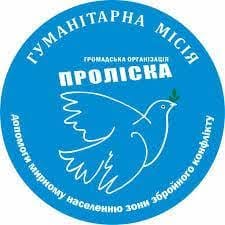




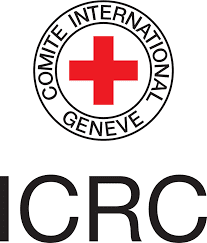
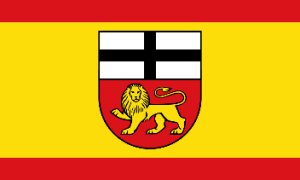
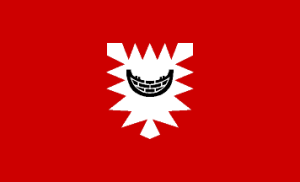

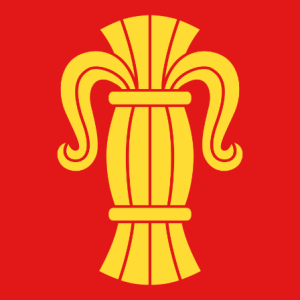




After the final victory over the enemy and the liberation of the whole of Ukraine, the Kherson community will face significant reconstruction and rebuilding, utilizing advanced global experience and modern technological solutions.
